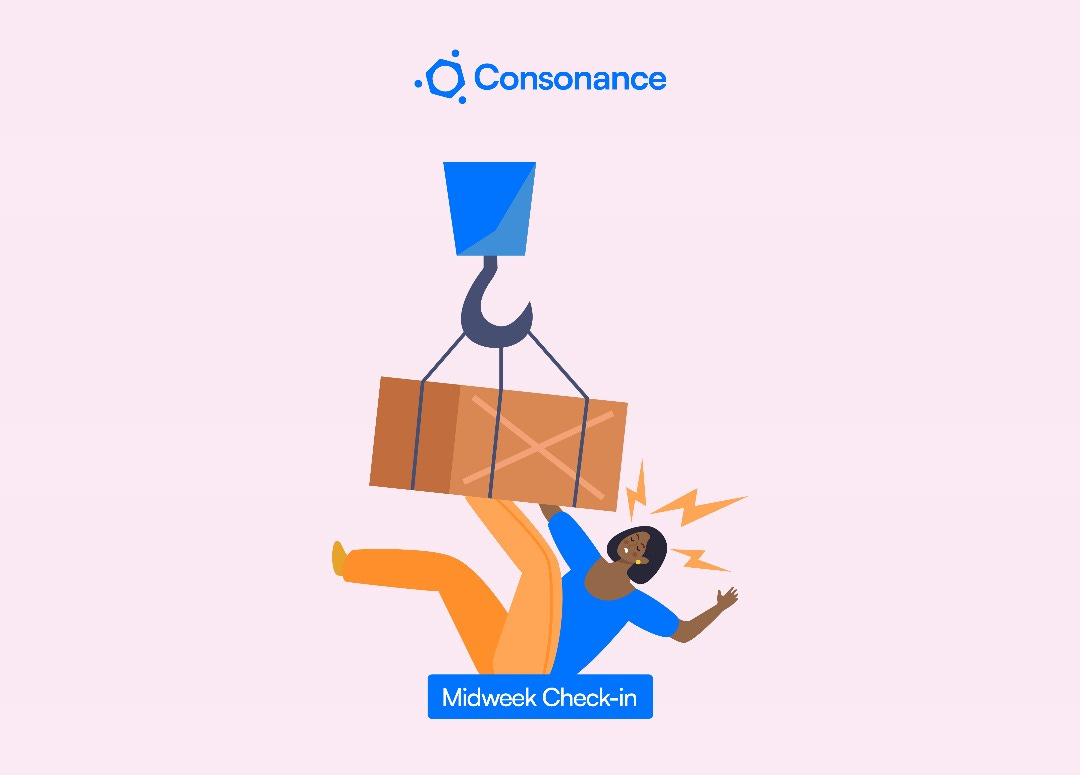The Next Infrastructure Layer: Why Africa’s Digital Logistics Network is Still in Beta
Can it be resolved? 🤨😬
Hola, Dear Innovator 👋
It’s the weekend!!!
Let the rest of the world focus on other mundane stuff; that type of vibe is not welcome here 😏
Africa’s digital economy has made significant progress in recent years, particularly in fintech solutions and mobile payments. However, a growing disconnect exists between the ease of moving money and the complexity of moving goods that have been paid for almost instantaneously, and nobody is talking about it
Good thing you have your favourite newsletter from Consonance to get into the deets for you!
So the thing is, Africa has leapfrogged in digital finance, so much that mobile money alone handled $1.1 trillion (82 billion transactions) in 2024, but moving goods that were bought with a percentage of that same money hasn’t kept pace.
Despite forecasts of 520 million online shoppers and ~$46 billion in e-commerce sales by 2025, physical delivery costs are still exorbitant. In sub-Saharan Africa it costs 50–75% more to transport goods than in other regions. Likewise, on average, Nigerian businesses lose an estimated $19 billion per year to port delays and red tape.
In short, while African consumers tap their phones by the minute, the vans and trucks that must bridge the “last mile” often can’t move fast or cheap enough.
In today newsletter. we’ll explore:
👉 The logistics gap limiting the scalability of African digital commerce
👉 Current challenges in fulfilment and last-mile operations
👉 Emerging strategies for infrastructure-oriented innovation across the continent
Fintech Has Outpaced Fulfilment
Fintech adoption in Africa is sky-high.
GSMA reported that 65% of the global mobile-money volume happens here, in Africa, with ~108 billion transactions in 2024. East and West Africa each have ~450 million mobile money accounts, thus dwarfing other regions by a mile.
Meanwhile, e-commerce and logistics are still emerging. Per reports, only ~10% of retail sales in Nigeria are online, and cross-border e-commerce remains a small but growing slice. Last-mile delivery remains a headache in 2025 ‘cos of poor roads and the erratic addressing system which forces couriers off-route. On-time delivery rates lag far behind in a lot of African countries, and businesses report freight delays of weeks at congested ports.
African markets have built trust in digital transactions faster than in physical logistics. Although wallet-to-wallet payments can be said to work reliably, e-commerce businesses still compete with the extra cost to ship within Nigeria, and carrying goods to a neighbouring country can easily triple the price. To stay afloat and serve their users, many logistics companies end up absorbing high haulage costs or outsourcing it, creating a persistent gap between the digital finance and fulfillment sector.
Innovators Bridging the Divide 🚀
Despite these challenges, a wave of African solution providers have been innovating to close the gap. They’ve been doing this by deploying solutions to conquer the obstacles that hinder their operations and proving that with smart logistics, commerce can scale:
1) Kasha (Kenya):
Started as an online pharmacy for consumers, Kasha expanded into a B2B supply platform for clinics and retailers. It now processes >$50 million in annual revenue (the highest ever reported in African health supply tech), serving more than 500,000 consumers and 3,000 health providers.
Key to Kasha’s strategy was building inventory management and financing tools so pharmacies and clinics can order stock digitally, despite irregular shipping. By integrating with insurance networks and offering credit to clinics, Kasha has boosted its volume beyond what pure cash customers would allow.
2) Kobo360
Often called “Uber for trucks”, Kobo360’s app links cargo companies to drivers.
At its peak, it had about 50,000 registered truck drivers across West and East Africa. On the platform, shippers can see available trucks, get real-time GPS tracking, and pay half the freight immediately on pickup. This alone shaved 7% off logistics bills for users.
3) MAX.ng (Nigeria):
MAX focuses on ultra-last-mile deliveries with motorcycles (and now electric bikes). Co-founded in 2015, MAX has logged over 1 million trips as one of Jumia’s top delivery partners. The riders are tracked via an app that routes them optimally through Lagos’s traffic, and payments are cashless.
MAX used part of its $7M financing to pilot electric motorbikes, reducing operating costs and urban pollution. By owning its vehicles and using data-driven dispatch, MAX has shown that last-mile deliveries can be industrialized at scale.
Other Innovators include:
Tech to the Rescue: Commerce & Scale 🌍
Breaking these silos is about more than tech – it’s about adapting to Africa’s unique business thresholds and the following future-forward ways can bring a fix to the issues that currently affect African logistics companies:
1) Real-time Tracking:
Modern fleets use IoT devices and GPS. Companies like Kobo360 and Twiga let clients watch shipments on a map. Riders for couriers like MAX.ng are app-dispatched with traffic-aware routing.
Even small drivers often carry smartphones, making live-location the norm rather than exception. This visibility lets managers reroute on the fly. It also reduces theft (drivers don’t carry much cash) and provides accountability to big shippers.
2) APIs and Integration:
E-commerce platforms (Jumia, Konga, Wasoko/Sokowatch) now expose their logistics APIs so third-party sellers can book pickup slots automatically.
Fintech- logistics integrations are also emerging: Kobo360’s Kopay gives drivers instant payouts via mobile money, syncing financial flows with haulage. These API-first models (digital waybills, barcode scans, electronic PODs) replace paper trails. In essence, mobile-money apps can be plugged into logistics databases, making the $1T fintech infrastructure support even 😉 routine cargo billing.
TL/DR:
The future of Africa’s digital commerce depends on closing the gap between fintech and fulfilment.
The African Continental Free Trade Area (AfCFTA) alone could boost intra-regional trade to 52% by 2030 but only if goods can actually move across borders efficiently. Per reports, the African Development Bank is targeting an investment of $10 billion into transport projects (2020–2030) and initiatives like the Lagos–Abidjan trade corridor are slowly taking shape in line with that.
If African solution providers and governments keep innovating, by expanding road networks, building cold hubs, and adopting unified digital platforms, the same digital revolution that put a smartphone in every African pocket will finally put an efficient truck behind every parcel.
How soon do you think this will happen? 🤔


